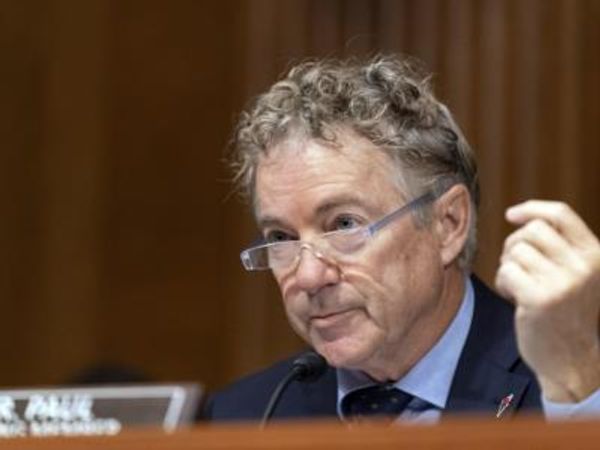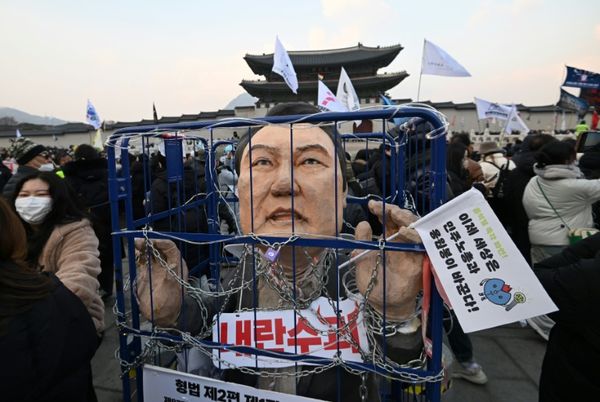DALLAS — It’s official. You can make alternative plans for my birthday party. The Yankees aren’t coming to town on March 31. And neither are the Texas Rangers.
By now you know that after spending nine days in Jupiter, Fla., the owners and players behaved as if their brains are from Mars. The first week of the Major League Baseball season has been canceled, not postponed. If you don’t count the stalled start in the almost equally embarrassing negotiations prior to the 60-game pandemic season of 2020, it’s the game’s first true work stoppage since 1995.
Baseball writers have beaten up MLB commissioner Rob Manfred and the owners’ side in this travesty enough that I don’t think any more needs to be said about their greed. My focus is on the players and their misguided approach to these negotiations. Simply being the lesser of two evils does not constitute a victory.
In this case, the owners gave players a big piece of what they want — more money for younger players. The rise in rookie base salaries from $570,000 to $700,000 represents a 23% increase. That means more money for second- and third-year players before they are eligible for arbitration. This makes up about half of modern major league rosters. If those players themselves could vote their conscience, they would rush to take this deal.
But the MLBPA rejected it immediately and then sent Max Scherzer, who makes $1 million per start, along with $10 million-a-year reliever Andrew Miller to the podium to tell us how united these players are.
Great.
What a comforting show of solidarity from the people whose children are set for life on behalf of young players who have performed at atrociously small minor league salaries just trying to get their crack at The Show some day.
Unwilling to rush more players into arbitration eligibility, owners also offered players a $30 million bonus pool for young players. This came out of thin air. It didn’t exist last year. The players wanted $85 million and left the table.
The owners did not give players what they wrongly think they need — higher thresholds for the competitive balance tax that owners now use as a salary cap. It was $210 million and owners were willing to bump it to $220 million and hold it there for three years. The players wanted $238 million with increases in the coming years. They place a majority of their interest on this topic, and I get why that happens, but it’s based on a false pretense.
The luxury tax affects four or five out of 30 teams. We know Steve Cohen’s Mets will spend to whatever level they can, and the Red Sox and Yankees will be right behind them. The Dodgers have been leading the way but it won’t surprise me if they throttle down a bit in coming years. Regardless, the higher the tax, the more teams that throw up their hands, say “we can’t compete with that” and head for the tanking pool. I would argue a slightly lower CBT would actually benefit players because of the number of teams that believe they could compete with greater restraints on the big spenders.
What players really need are salary floors for teams, but they will never get those without a salary cap and the players believe that avoiding the cap all these years is some major achievement on their part. Apparently they haven’t studied NBA salaries lately.
But the most amazing thing to me is that players treat the owners’ 14-team playoff proposal as if it’s something that has no benefit. The owners will make an extra $100 million in TV revenue if the playoffs expanded to include four more teams. The players see that money going directly to the owners and miss the bigger picture.
A field of 14 playoff teams means more stars shining in the postseason. There’s money to be made on that. A field of 14 playoff teams means 20-22 teams thinking they are still in the hunt at the trade deadline. That creates a seller’s market that favors the players. And 14 playoff teams means more teams in the offseason believing they are close to going after championship rings. Teams inevitably spend more money chasing dreams once they make the playoffs.
What the players don’t really want, despite their claims, is competition. Miller said, specifically, “It’s not just about money. We have been screaming for years about competition issues.’’
The fact that the Tampa Bay Rays’ ingenuity has allowed them to remain competitive without spending alongside the Dodgers, Yankees and Red Sox does not mean this is a league built for parity. The higher the CBT goes, the more the game is designed to favor the richest clubs with the biggest local TV revenues and exclude the rest. That’s something fans understand and it turns them off. Players inevitably fail to read that room.
The owners are willing to create a lottery which will help but won’t stop clubs from bottom-feeding. This isn’t a game where the first pick frequently has a chance to be the next LeBron. The presence of college offers can cause players to slide all over the place in the first round of the baseball draft.
If players want more teams spending money and competing for free agents, the only sure way to get it is a salary floor. Without that, expanded playoffs (that you or I might not like, but the players don’t care) and real increases in the money available to the youngest players are on the table. Players always like to act like tough guys. It would be wonderful if they acted like smart guys.
Play ball.







